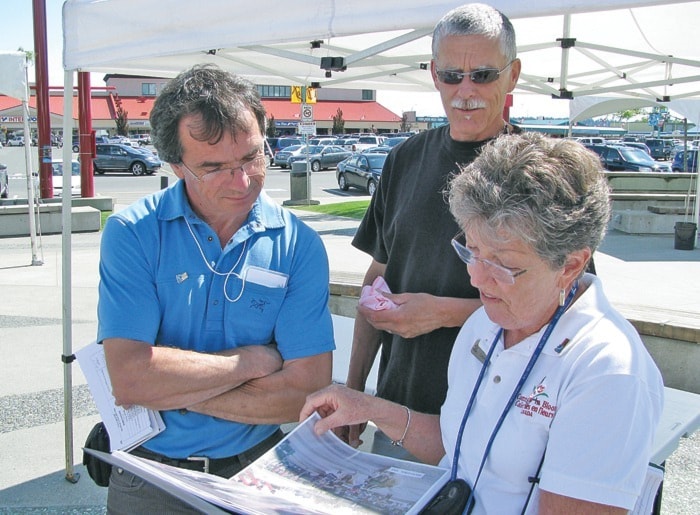Campbell River entered the national Communities in Bloom competition for the third year in a row, and the judges were taken on a whirlwind tour of the city Thursday and Friday to see how the city stacks up against the rest of the country.
The city first entered the national competition in 2009, and has received five blooms out of five for 2009 and 2010. It will find out where it stands in comparison to the rest of the country in late October, but for now, Lynn Wark, Parks Project Supervisor for the City of Campbell River, said the tour went “great.”
National Communities in Bloom judges, Normand Rosa and Betty Lamont, evaluated the community based on tidiness; environmental action; heritage conservation; urban forestry; landscape, turf, and groundcovers; and floral displays, with an emphasis on community involvement in each of these areas.
So, although called Communities in Bloom, the competition encompasses much more than flowers.
“It’s really about a healthy community, instead of just growing flowers,” said Wark. “Developing that sense of community development, that pride, and that community spirit.”
Rosa and Lamont were taken all over the city on Friday to see everything from Highway 19A upgrades, to the Laughing Willow Community Garden, Discovery Pier, the Compost Education Centre, and the Baikie Island Restoration project.
Foreshore improvements at Dick Murphy Park was another piece of Campbell River that was shown off to the judges.
Terri Martin, Environmental Coordinator for the City of Campbell River, explained the city’s soft-shore technique used to strengthen the foreshore against erosion in this area, while the judges had a look for themselves.
According to Martin, much of the city’s foreshore currently has riprap, or large rocks, in place to prevent waves from coming into land.
However, when the waves crash directly into the riprap the power is intense and foreshore areas are eroding at an alarming rate.
“Every time there’s a winter storm, a huge chunk of shoreline can be washed away; you can literally lose feet in a significant event, and you can’t reclaim that land, so it’s a concern,” said Martin.
Instead of using riprap to create a barrier protecting the land from winter storms, the city used materials like logs and cobble stones at Dick Murphy Park three years ago.
These materials regularly wash up in boat launches, and were relocated to the park foreshore to re-create a natural beach profile. The waves then break farther out, and come into land gradually, rather than crashing directly into the riprap.
The foreshore has held up since then, according to Martin.
She is working on a plan to have this technique implemented on all city owned beaches, as well as having it incorporated into the OCP (Official Community Plan) so private property owners must implement it when developing in the future.
As for the judges of Communities in Bloom, Martin said they were keen to learn about the project.
“They seemed quite interested in the whole coastal process because you don’t really think of how all these different things are linked,” said Martin, “and when I described how much land could be lost in one storm — it’s surprising, it’s surprising even to people who live here.”
